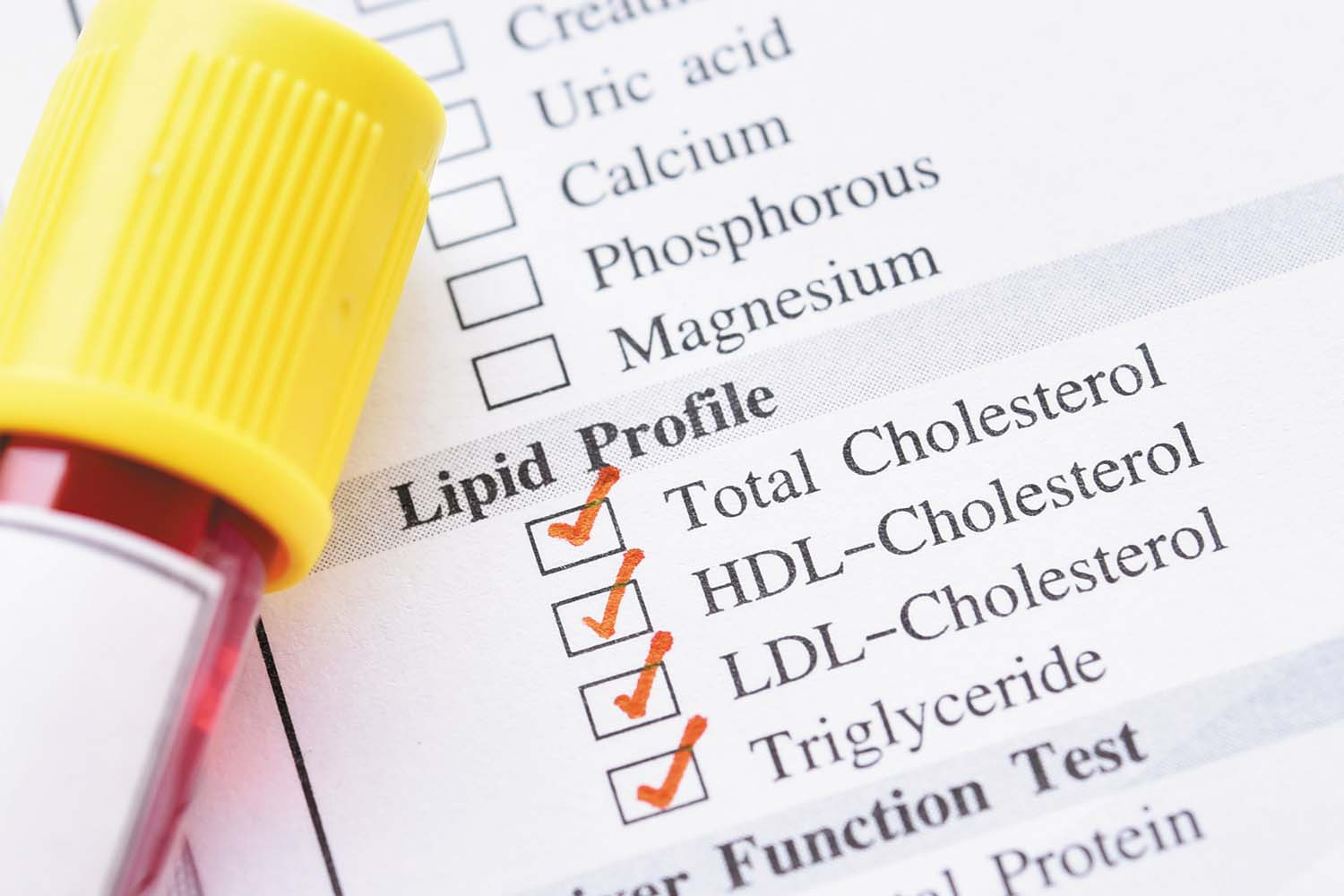Rethinking HDL cholesterol
Long known as "good" cholesterol, high-density lipoprotein (HDL) is more complex than once believed.
- Reviewed by Christopher P. Cannon, MD, Editor in Chief, Harvard Heart Letter; Editorial Advisory Board Member, Harvard Health Publishing

Cholesterol, a waxy, pale yellow fat, travels through the bloodstream in tiny, protein-covered particles called lipoproteins that mix easily with blood. You need cholesterol to create cell membranes, make hormones, and synthesize vitamin D, among other things. But if you're trying to avoid heart disease, you should keep tabs on your blood cholesterol values — especially your low-density lipoprotein (LDL), or "bad" cholesterol. Too much LDL in the bloodstream helps to create artery-clogging plaque, raising your risk of a heart attack.
Your cholesterol report (also called a lipid profile or lipid panel) also includes your high-density lipoprotein (HDL); see the table below for recommended values. HDL has long been referred to as "good" cholesterol, based on observational studies dating back decades showing that people with high HDL levels are less likely to develop cardiovascular disease.
However, the scientific understanding of HDL has evolved in the ensuing years, and many cardiologists now believe that HDL may be more of a bystander rather than a "good guy" that helps lower heart disease risk. "Higher HDL levels are closely linked with behaviors like eating a healthy diet and getting regular exercise," says Dr. Stephen Wiviott, a cardiologist at Harvard-affiliated Brigham and Women's Hospital.
Talking trash about HDL
Researchers have also discovered that the way HDL functions and its role in the body are more complex that once believed. "The analogy that's often used to describe HDL is a garbage truck, because it picks up extra cholesterol, or garbage, from the bloodstream and the arteries and then transports it to the liver, where it's recycled or disposed," says Dr. Wiviott. That was the rationale behind the creation of experimental drugs that raised HDL levels dramatically — between 60% and 100%.
Over the past decade, large clinical trials tested five of these drugs (known as CEPT inhibitors) in people with low HDL levels. But while the drugs reliably raised HDL levels, they didn't achieve the most important goal: preventing heart attacks, strokes, and other complications from clogged arteries. Maybe, the thinking went, it wasn't the number of garbage trucks that mattered but how good they were at picking up trash. That is, maybe the drugs increased the wrong kind of HDL cholesterol.
It turns out that HDL comes in different shapes and sizes. Some types are spherical, while others are doughnut-shaped. Some types of HDL are great at plucking excess cholesterol from LDL and artery walls (a process referred to as reverse cholesterol transport), while some are not.
Lipid lowdown: What numbers are best?The desirable values are for people without known heart disease. |
|
|
LEVEL |
CATEGORY |
|
TOTAL CHOLESTEROL |
|
|
Less than 200 mg/dL |
Desirable |
|
200–239 mg/Dl |
Borderline high |
|
240 mg/dL and above |
High |
|
LDL CHOLESTEROL |
|
|
Less than 100 mg/dL |
Optimal |
|
100–129 mg/dL |
Near optimal/above optimal |
|
130–159 mg/dL |
Borderline high |
|
160–189 mg/dL |
High |
|
190 mg/dL and above |
Very high |
|
HDL CHOLESTEROL |
|
|
Less than 40 mg/dL |
Low |
|
60 mg/dL and above |
High |
|
TRIGLYCERIDES |
|
|
Less than 150 mg/dL |
Normal |
|
150–199 mg/dL |
Borderline high |
|
200–499 mg/dL |
High |
|
500 mg/dL and above |
Very high |
|
Source: Adapted from the National Cholesterol Education Program. |
|
A better garbage truck?
What if you had an HDL-based drug specifically designed to improve reverse cholesterol transport? Think of it as an empty garbage truck with a better trash compactor. But when investigators tested four weekly infusions of this type of experimental drug on more than 18,200 recent heart attack survivors, it was no better than a placebo in preventing heart attack, stroke, or death, as detailed in a study published May 2, 2024, in The New England Journal of Medicine. "It's yet another point of reference to suggest that targeting HDL with medications may not be helpful," says Dr. Wiviott.
But these findings shouldn't distract you from focusing on the factors you can control — namely, making sure your LDL is below 100 milligrams per deciliter, or even lower if you have heart disease (see advice about LDL-lowering strategies). That's true even if you have a high HDL level, which shouldn't be considered overly reassuring or a reason to ignore an elevated LDL value, says Dr. Wiviott.
Image: © jarun011/Getty Images
About the Author

Julie Corliss, Executive Editor, Harvard Heart Letter
About the Reviewer

Christopher P. Cannon, MD, Editor in Chief, Harvard Heart Letter; Editorial Advisory Board Member, Harvard Health Publishing
Disclaimer:
As a service to our readers, Harvard Health Publishing provides access to our library of archived content. Please note the date of last review or update on all articles.
No content on this site, regardless of date, should ever be used as a substitute for direct medical advice from your doctor or other qualified clinician.
















